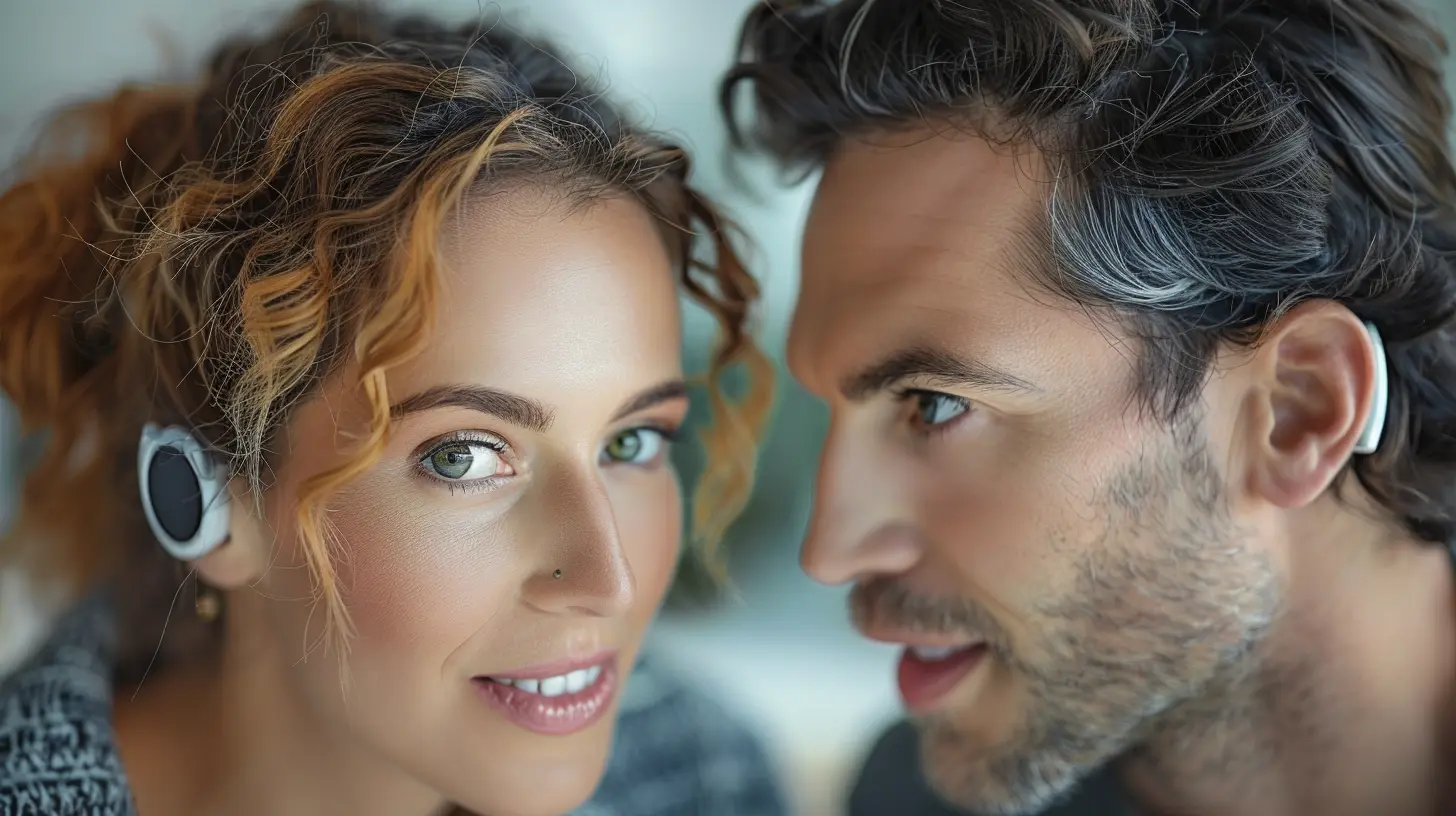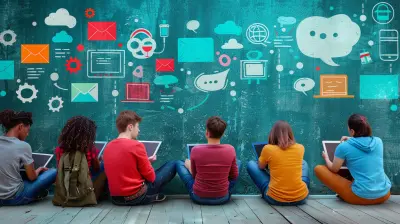Mastering the Art of Active Listening in Conversations
12 April 2025
Ever found yourself in a conversation where you're just waiting for your turn to speak rather than truly listening? You're not alone. Many of us think we're good listeners, but in reality, we're often distracted, planning our next response, or even daydreaming.
Active listening is a game-changer. It's the key to meaningful conversations, stronger relationships, and deeper understanding. Whether you're talking to a friend, colleague, or loved one, mastering this skill can completely transform how you connect with others.
So, how do you become an active listener? Let’s dive deep into the art of active listening and uncover the secrets to improving your communication skills.

What Is Active Listening?
Active listening isn’t just about hearing words—it’s about fully engaging with the speaker. It involves paying close attention, understanding their message, and responding in a way that shows you genuinely care. Unlike passive listening, where words may go in one ear and out the other, active listening ensures mutual understanding and promotes meaningful conversations.Think of it like a game of catch. If you're not paying attention, you'll miss the ball. The same goes for conversations—if you’re not actively listening, you'll miss important details.

Why Is Active Listening Important?
You might be wondering—why does active listening matter so much? Here are a few reasons:- Improves Relationships: People feel valued when they know they’re being heard. Whether it’s a personal or professional relationship, active listening builds trust and respect.
- Enhances Understanding: Miscommunication happens when we fail to listen properly. Active listening helps clarify messages, avoiding unnecessary misunderstandings.
- Boosts Problem-Solving Skills: By fully understanding a situation, you’ll be better equipped to offer meaningful advice or solutions.
- Encourages Open Communication: When people know you’re paying attention, they’re more likely to share honestly and openly.
Now that we know why it’s important, let's break down the key components of active listening.

The Key Components of Active Listening
Mastering active listening requires practice and intention. Here are the essential components:1. Give Your Full Attention
Imagine trying to have a conversation with someone scrolling through their phone. Annoying, right? Giving your full attention means putting away distractions—phones, laptops, or even wandering thoughts.Tip: Maintain eye contact, face the speaker, and use open body language to show that you're present and engaged.
2. Show That You're Listening
Nodding, smiling, or using small verbal acknowledgments like “I see” or “That makes sense” reassures the speaker that you're tuned in. These small gestures go a long way in making the conversation more engaging.3. Avoid Interrupting
We’ve all been guilty of jumping in with our thoughts before someone finishes speaking. But interrupting disrupts the flow and can make the speaker feel unheard. Hold back, even if you’re excited to respond.Think of it like a movie: If you keep skipping ahead, you’ll miss the full story. Let the speaker finish before you join in.
4. Paraphrase and Summarize
Repeating back key points in your own words helps confirm that you understand correctly.For example, if a friend says, “I’ve been feeling really stressed at work because of tight deadlines,” you can respond with:
"It sounds like your workload has been overwhelming lately. That must be tough."
This not only clarifies understanding but also shows empathy.
5. Use Open-Ended Questions
Instead of asking questions that can be answered with a simple "yes" or "no," try open-ended ones that invite further discussion.- ❌ Closed question: Did you have a good day?
- ✅ Open-ended question: What was the best part of your day?
This keeps the conversation flowing and encourages deeper connection.
6. Practice Empathy
Listening isn’t just about words—it’s about emotions too. Try to put yourself in the speaker’s shoes. If they’re sharing something difficult, acknowledge their feelings instead of rushing to “fix” the problem.A simple “That must have been really hard for you” can be more comforting than offering solutions too soon.
7. Respond Thoughtfully
After listening, respond in a way that shows you’ve taken in what was said. Avoid giving generic responses like “I know how you feel” unless you truly do. Instead, personalize your response based on what you’ve heard.8. Pay Attention to Nonverbal Cues
Words are just part of the story. Facial expressions, tone of voice, and body language reveal a lot about how someone is feeling. If a friend says “I’m fine” but looks downcast, that’s a sign they might not be fine at all.9. Be Patient
Sometimes, people need time to put their thoughts into words. Resist the urge to fill every pause—silence can be powerful in a conversation.10. Avoid Judging or Jumping to Conclusions
We all have different perspectives. Try to listen without forming judgments mid-conversation. This helps people feel safe expressing their true thoughts without fear of criticism.
How to Improve Your Active Listening Skills
Now that you know the fundamentals, let’s talk about how to put them into practice.1. Practice Mindful Listening
Becoming an active listener starts with mindfulness. The next time you’re in a conversation, focus entirely on the speaker. If your mind starts to wander, gently bring it back to the conversation.2. Record and Reflect
Try recording a conversation (with permission) and listen to how well you engage. Were you interrupting? Did you truly listen? Self-awareness is key to improvement.3. Engage in Role-Playing
Practice with a friend or family member. Have one person talk while the other focuses entirely on active listening. Then, switch roles and reflect on the experience.4. Read and Observe
Watch interviews, TED Talks, or listen to podcasts where skilled communicators engage in deep conversations. Notice how they listen, respond, and engage.5. Challenge Yourself
Pick a day to actively listen during every interaction—whether it’s a casual chat, a work meeting, or a deep conversation with a loved one. Observe how the dynamics change.The Benefits of Mastering Active Listening
Once you master active listening, you’ll notice a positive shift in your relationships, workplace interactions, and personal growth. Here’s what you’ll gain:✅ Stronger Connections – Friends and loved ones will appreciate feeling truly heard.
✅ Career Growth – Good listeners make great leaders and collaborators.
✅ Better Conflict Resolution – Listening reduces misunderstandings and promotes smoother problem-solving.
✅ Increased Emotional Intelligence – Understanding others’ feelings boosts empathy and social skills.
Final Thoughts
Active listening is more than just a communication skill—it’s an art that can transform your relationships and the way you connect with others. While it takes effort and practice, the rewards are well worth it.So, the next time you're in a conversation, stop for a moment. Listen—not just to reply, but to truly understand. You’ll be amazed at the depth and impact of your interactions.
all images in this post were generated using AI tools
Category:
Communication SkillsAuthor:

Olivia Chapman
Discussion
rate this article
7 comments
Hope Soto
Active listening is essential for meaningful conversations. By focusing fully on the speaker and responding thoughtfully, we foster deeper connections and understanding in our relationships.
May 6, 2025 at 11:14 AM

Olivia Chapman
Thank you for highlighting the importance of active listening! It truly is the key to deeper connections and understanding in our interactions.
Nadia Jennings
Active listening enhances communication by fostering empathy, building trust, and ensuring understanding, ultimately transforming the quality of interpersonal interactions.
April 27, 2025 at 11:52 AM

Olivia Chapman
Thank you for highlighting the key benefits of active listening! It truly is essential for enriching our connections and enhancing communication.
Lulu Ellison
Active listening transforms conversations; it's key to meaningful connections.
April 21, 2025 at 12:07 PM

Olivia Chapman
Absolutely! Active listening fosters understanding and deepens relationships, making every conversation more impactful.
Zayla McDaniel
Active listening is crucial for effective communication. By fully engaging with the speaker—maintaining eye contact, nodding, and summarizing key points—you demonstrate respect and understanding. This practice not only strengthens relationships but also fosters a deeper exchange of ideas, enhancing both personal and professional interactions.
April 18, 2025 at 4:11 AM

Olivia Chapman
Thank you for highlighting the importance of active listening! Engaging fully with the speaker truly enriches our conversations and builds stronger connections.
Lisette McManus
Embrace active listening—connect, understand, and thrive together!
April 14, 2025 at 4:35 AM

Olivia Chapman
Thank you! Active listening truly fosters deeper connections and mutual growth. Let's thrive together through understanding!
Ariadne Snow
Thank you for sharing this insightful article on active listening! It's such an essential skill for meaningful conversations and connection. Your tips are practical and relatable, making it easier for readers to incorporate them into everyday interactions. Looking forward to more valuable content like this!
April 13, 2025 at 10:20 AM

Olivia Chapman
Thank you for your kind words! I'm glad you found the tips helpful and relatable. Stay tuned for more insights!
Henrietta Palmer
This article provides valuable insights into active listening, emphasizing its crucial role in effective communication. By mastering techniques like maintaining eye contact, asking open-ended questions, and offering thoughtful feedback, readers can enhance their conversational skills, foster deeper connections, and create a more engaging dialogue in both personal and professional settings.
April 12, 2025 at 10:36 AM

Olivia Chapman
Thank you for your thoughtful comment! I'm glad you found the insights on active listening valuable for enhancing communication skills.





